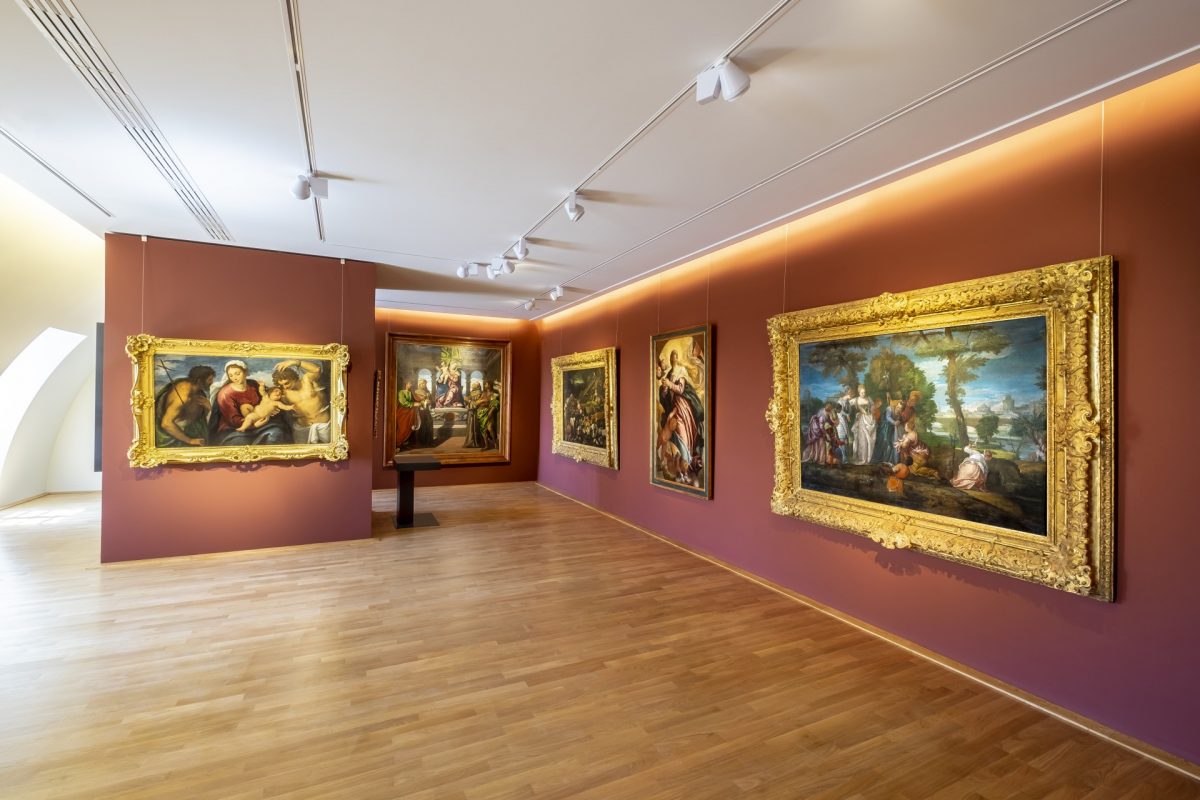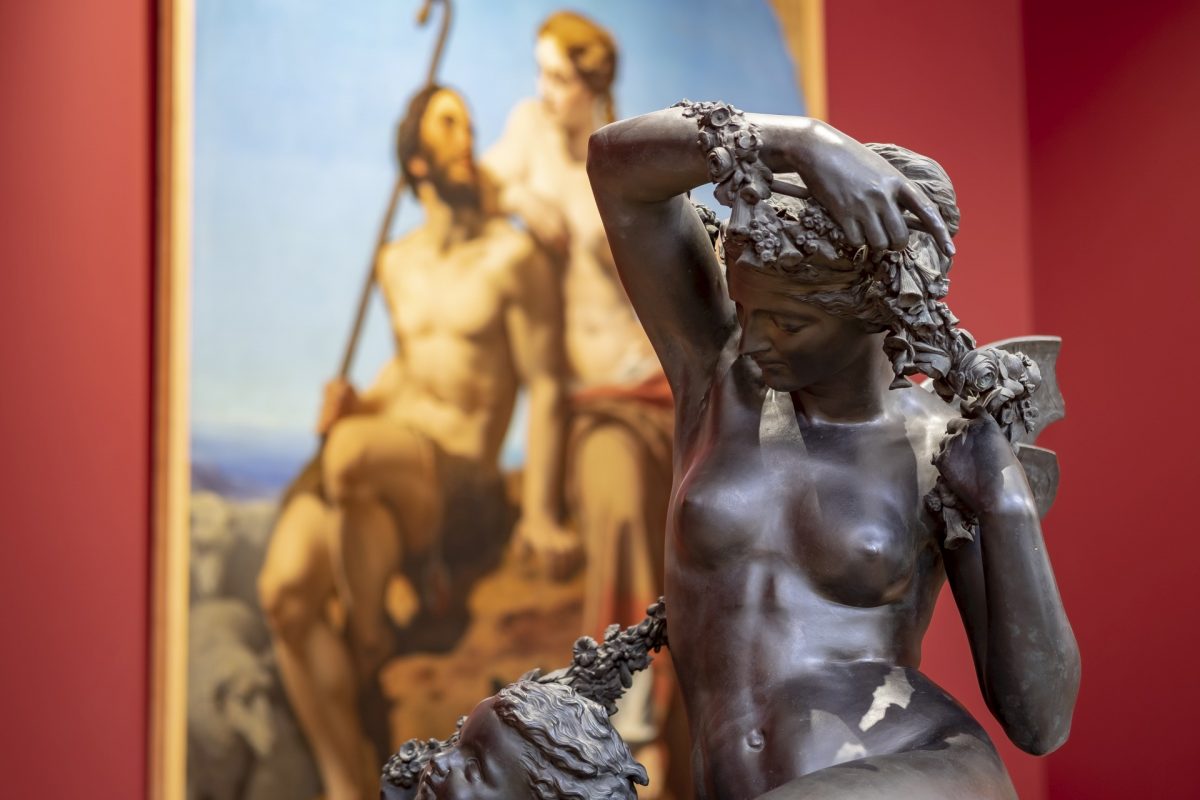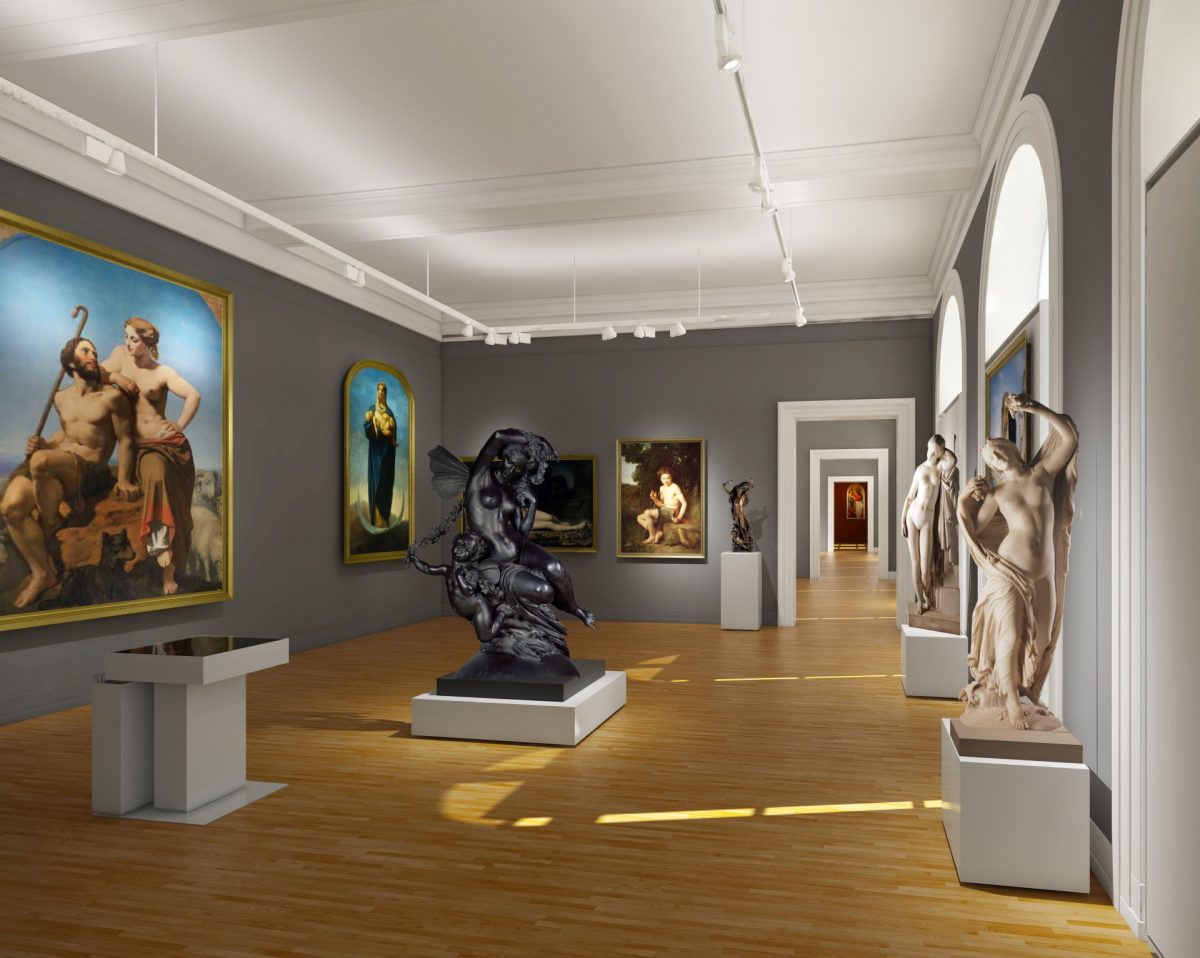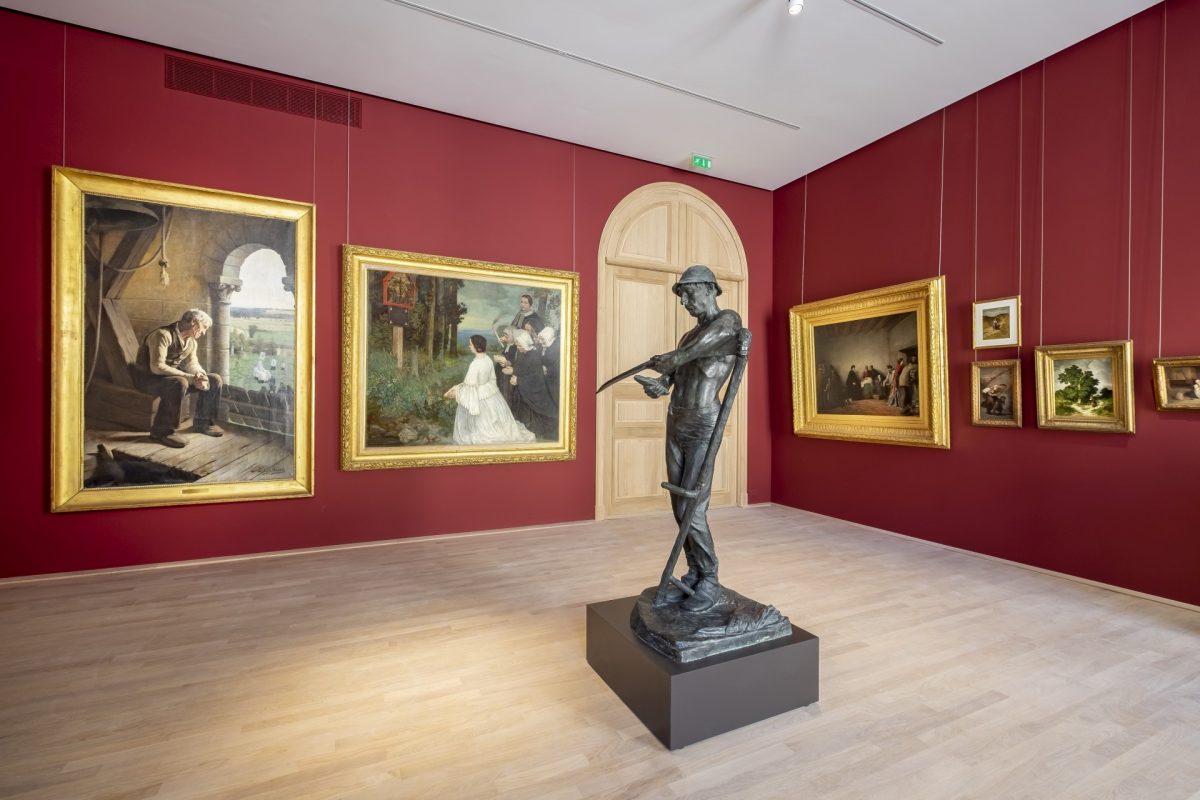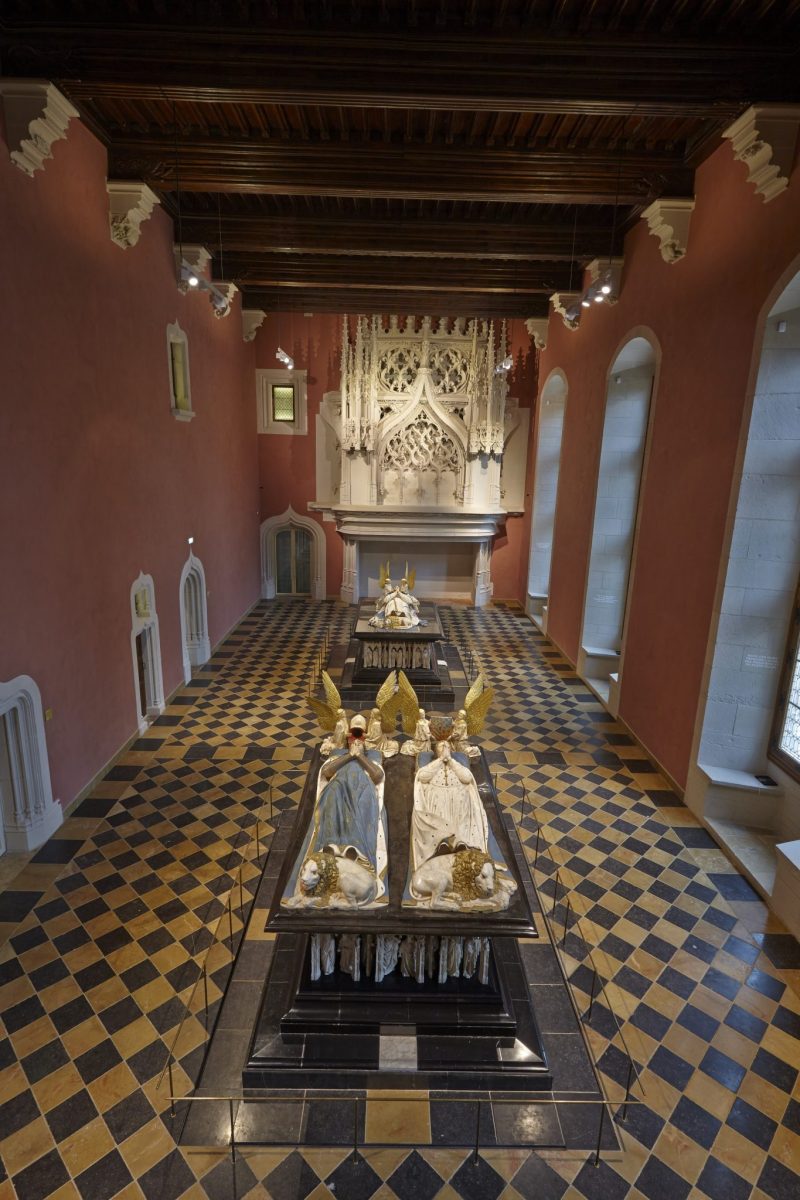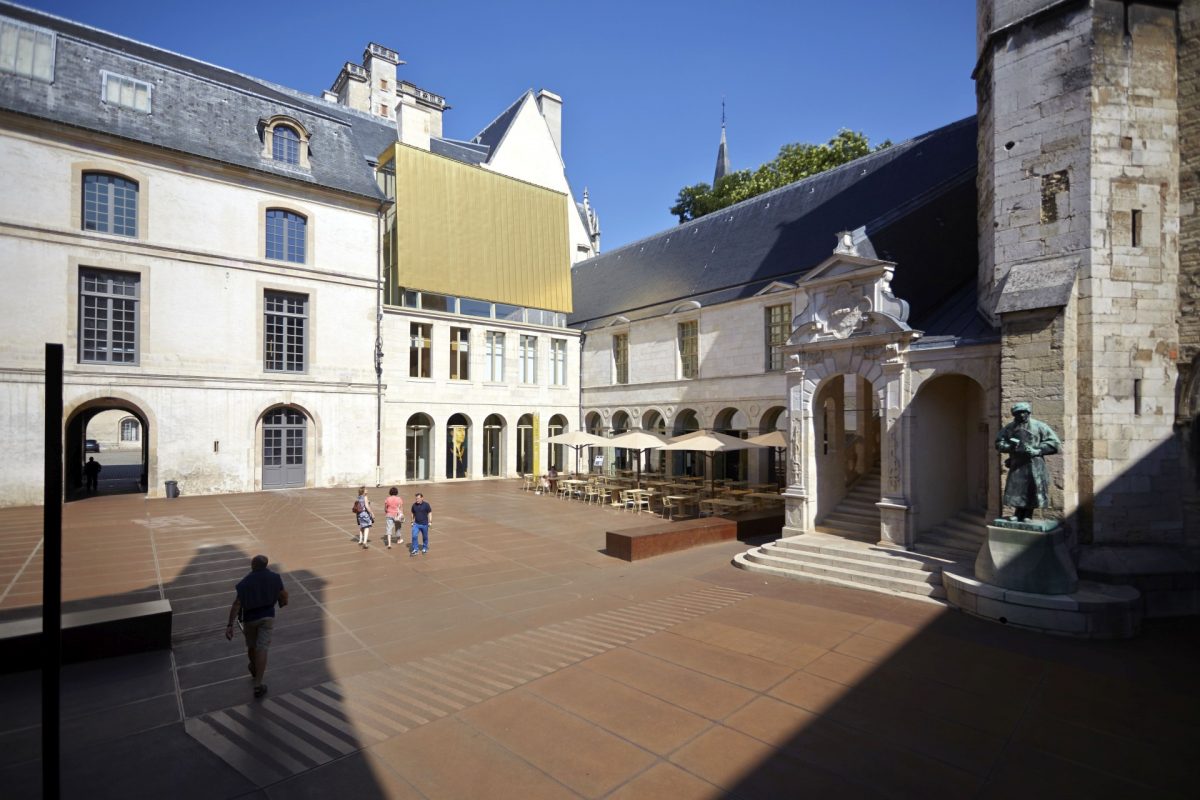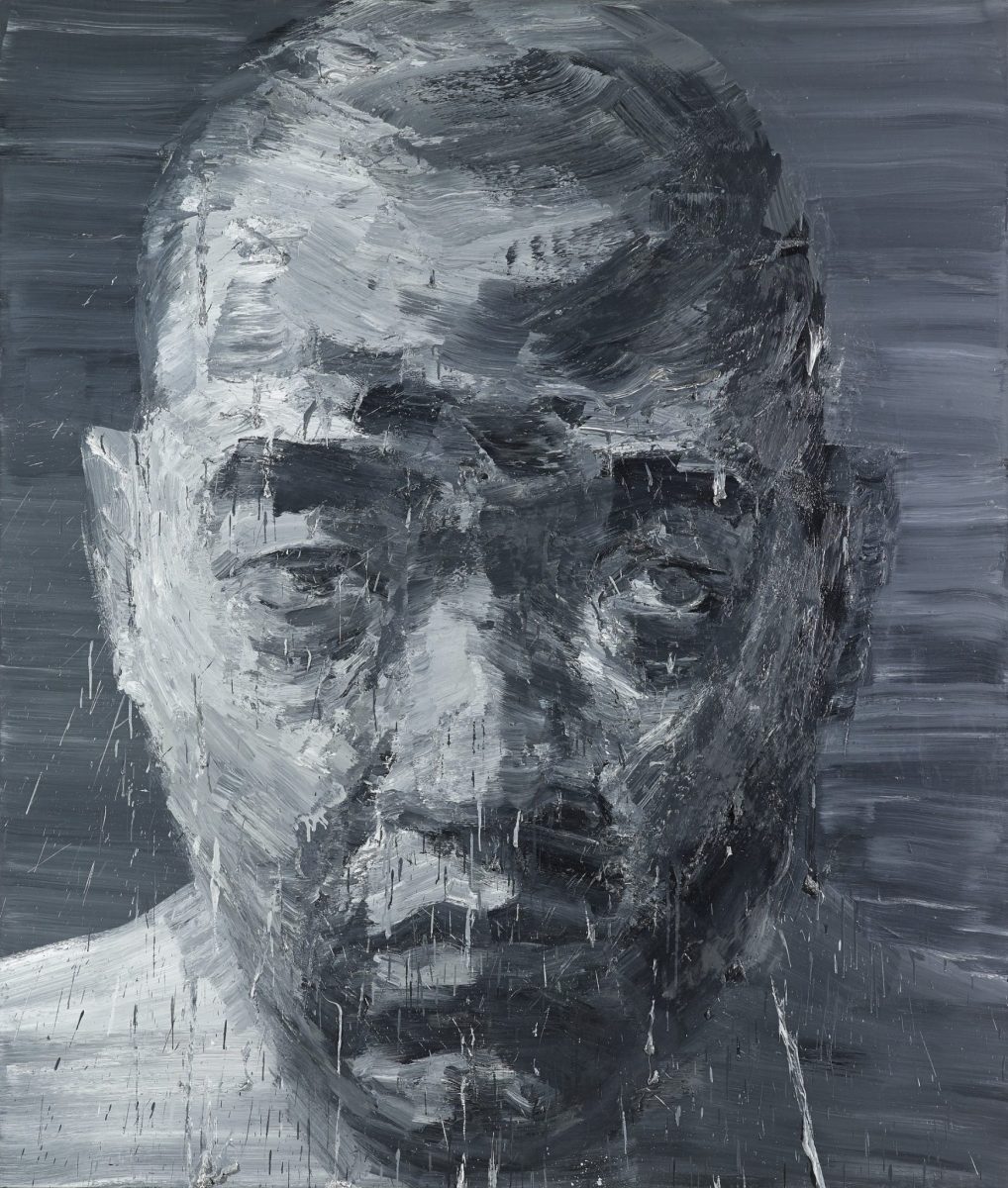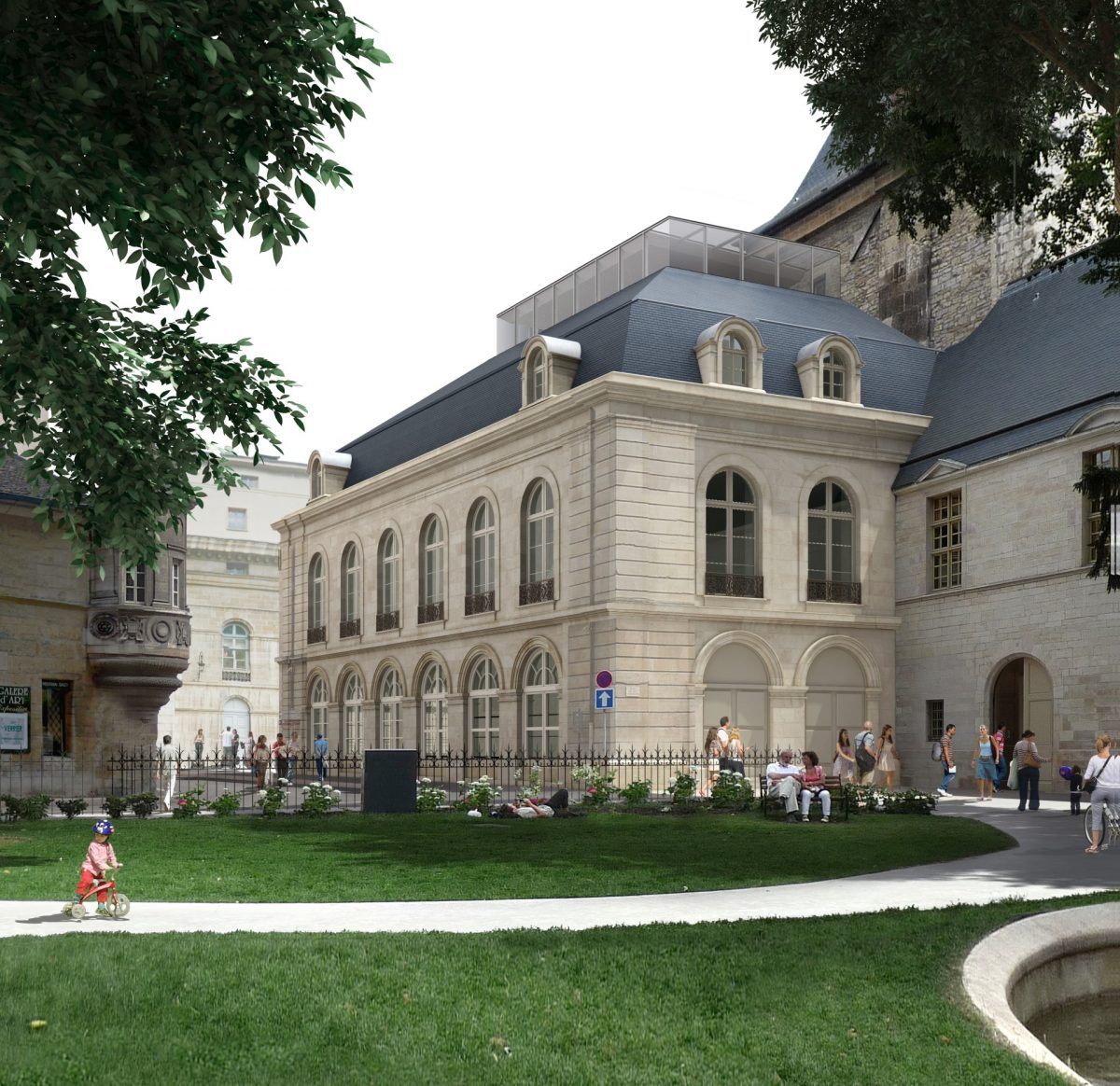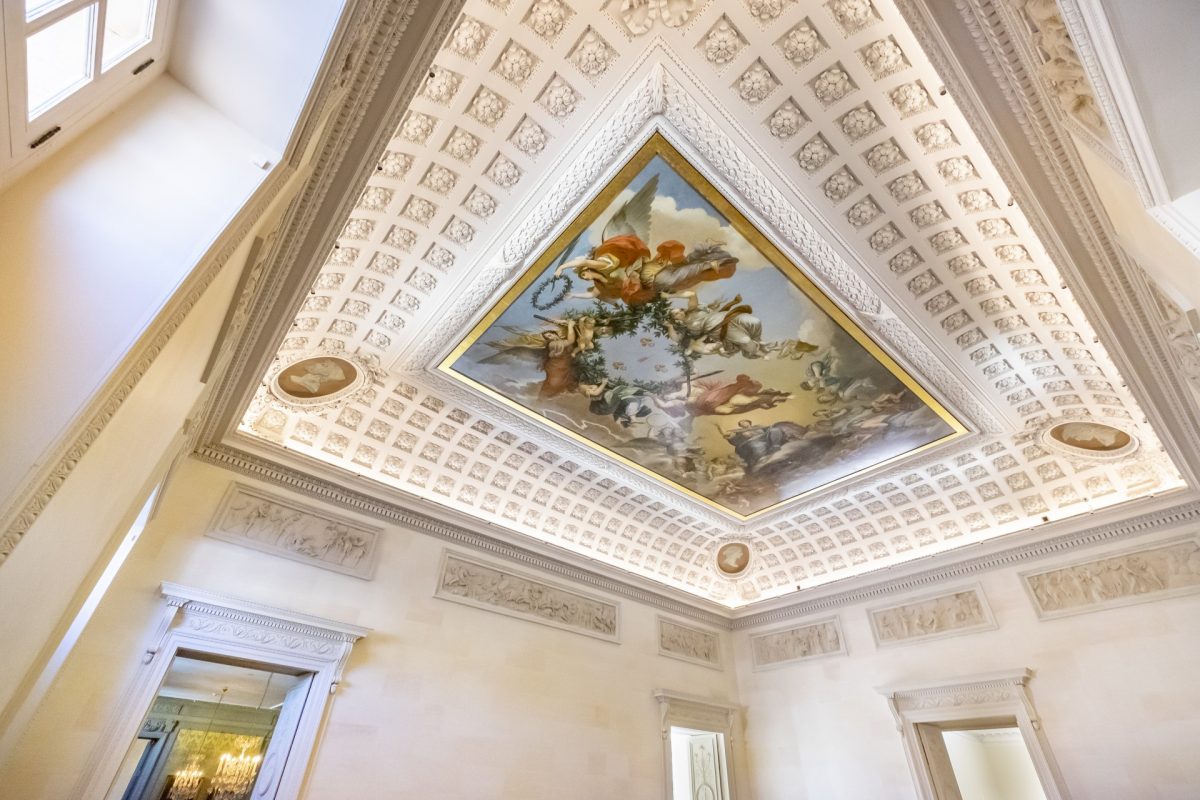The Fine Arts Museum of Dijon is in a newly transformed area of the Palace of the Dukes of Burgundy, open since May 2019 after ten years of renovation work. To discover the collections in this brand-new space, we chose to go on a guided tour, organised by the tourist office.
Architecture that has lived through the centuries
Our guide was waiting for us at the Square des Ducs. We joined a small group of visitors, mainly locals from Dijon who were looking forward to rediscovering the museum’s collections, of over 1,500 artworks.
Before going inside the building, we admired the architecture of the Palace of the Dukes and Estates of Burgundy. The building is made up of several architectural elements, built in different periods. The most ancient parts, built in a flamboyant gothic style , are the duke’s residence and the Philip-the-Good Tower.
Then we came to the other side of the building, with an elegant classic façade, built in the 17th and 18th centuries. The façade of the museum, overlooking the 19th century Place de la Sainte-Chapelle, now features two contemporary-style extensions: the gilded roof and a surprising skylight that really draws attention to the palace roofing.

Unmissable artworks
The guided tour of the Fine Arts Museum in Dijon is an excellent opportunity to observe and really understand some of the artworks exhibited. In following the chronological order of the great periods throughout history, our guide took us around the expertly selected pieces of the collection.
We discovered some surprising masks used for funeral rituals, known as the Fayum mummy portraits.These paintings on wooden boards are from ancient Egypt and portray the faces of mummified bodies. In the great hall of the palace are the twotombs of the Dukes of Burgundy.We were particularly impressed by the mourners, skilfully sculpted and supporting the black marble slabs which house the remains of the dukes.
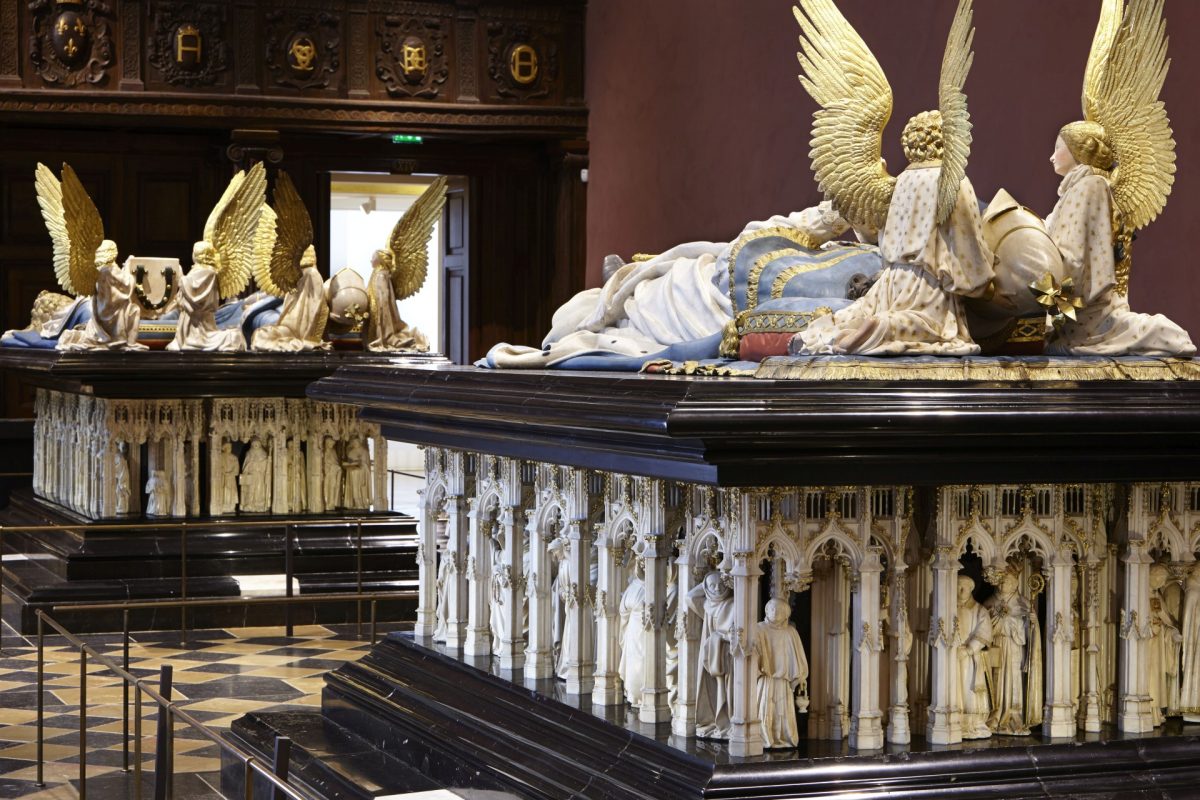
The painting that really amazed us was the portrait of “La Dame à sa toilette” (The Lady at her dressing table) wearing pearls and barely clothed. This painting represents the typical woman at the time of the Renaissance. The Japanese dressing table with several drawers, decorated with varnish and pearly shells, is the main piece of the museum’s collection from outside of Europe.
We then entered the statues room where we saw evidence of the 18th-century drawing school. This room has a superb ceiling painted by Paul Prudhon, in honour of the Princes of Condé, governors of Burgundy.
We took a moment to admire “Fishing boat returning to the harbour” by Impressionist painter Claude Monet before ending our tour in the room devoted to artworks by François Pompon. In this collection, we saw the pelican, the hare and the deer, as well as two prototypes of the famous polar bear! From there, we decided to go to Darcy Garden to see a replica of the original sculpture by the Burgundian sculptor. But as it was already lunchtime, we decided to stop off at the Brasserie des Beaux-Arts for a bite to eat first!







